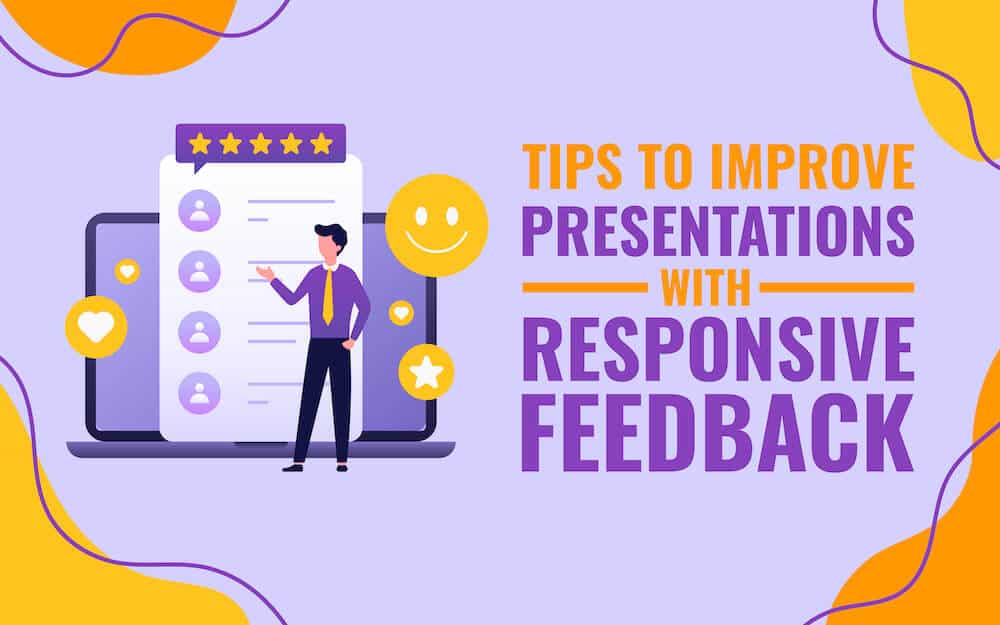
No matter the size of the business, each one has meetings on a regular basis in an effort to optimize performance metrics. Now these business meetings typically go one of two ways:
- They are highly productive and allow the team to become empowered and move projects forward. Or…
- They are a time suck accomplishing absolutely nothing.
Every organization can benefit greatly when business meetings are conducted the right way. These meetings should not only boost morale and help to develop team members, but should be an efficient way for members to communicate with one another.
If you’ve been asked to speak at your next business meeting, your contribution can go a long way in helping everyone stay on track and use the time effectively. Giving a powerful presentation will give the group a lot to discuss, thereby using the time wisely.
Whoa, no pressure!
Don’t worry, we’re about to give you tips that will help you knock your presentation out of the park and be the biggest hero of the meeting.
1. Prepare the Right Way
One of the biggest mistakes speakers make is to assume they have to be perfect. Most attempt the impossible, which is to memorize their entire presentation. Here’s what happens when you do that: you get nervous or someone asks you a question right in the middle of your speech and you completely lose your place. Then you stand there, silent and sweating, trying to remember where you left off.
Here’s a better way to go about preparing for your presentation: Don’t memorize a speech – instead practice the flow of your presentation. What does that mean exactly?
It means, once you have created an outline, practice speaking about those topics. How does it feel to naturally flow from one point to the next and the next. Just speak normally but get a feel for the structure of your presentation. Don’t write a script and memorize each sentence as if you were an actor.
2. Be Human
Chances are a lot of your colleagues are not happy to be in yet another long, boring meeting. So do your best to not be too stuffy but a human being. Break the ice a bit, maybe you can tell a joke or share something personal that happened with your kid before you got to work that day.
By setting the tone right up front, you will engage your audience and they will be on your side. This is half the battle!
3. Make Eye Contact
So you’re well prepared and you’ve warmed up the group with a joke or a light-hearted personal story. Now what?
To keep that audience engaged and listening, you want to be sure to make eye contact. This is true whether you are in a small conference room, or whether upper management has rented a large room at a local hotel.
While you speak, try and land on one person and hold their gaze for a few second before moving on to someone else. If the audience is large, don’t feel you must make personal eye contact with each and every person. Simply scan the crowd landing on a few different individuals.
Of course, in order to make good eye contact, it means you can’t look down at your notes or up at the screen reading your own PowerPoint slides. Remember, your slides are supplemental content and are there to help support your overall information.
The bottom line is, there is no better way to keep your audience engaged and listening than to make eye contact with them.
4. Watch Your Pacing
When speakers get nervous, they tend to start talking faster and faster. When our hearts start racing, our mouths follow suit. But when you speak quickly, it is hard for your audience to follow what you are trying to say.
Here’s an easy fix: when you feel yourself speaking too quickly, pause, take a deep breath, and continue. Deep breaths calm us and allow us to speak more slowly.
Something else to keep in mind is, even speakers that don’t get very nervous can speak too quickly. They tend to speak their normal way as if talking to a friend over lunch. But how we speak in private is not how we need to speak in front of groups.
In order for your information to really land with the audience (especially with a large audience when you are on a stage behind a platform) it is important to speak a bit slower than you normally would. Pretend that English isn’t the first language of the people you are speaking to to ensure you are speaking slowly and clearly enough.
No one really likes attending a business meeting. But if you follow these tips, you can help your organization’s next business meeting be fun, informative and productive!



